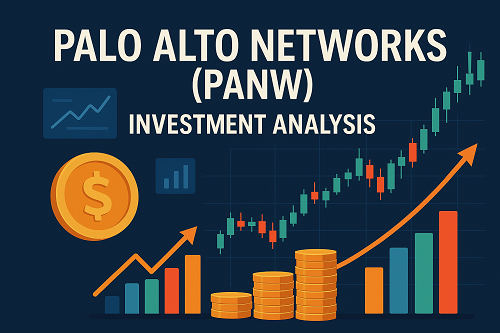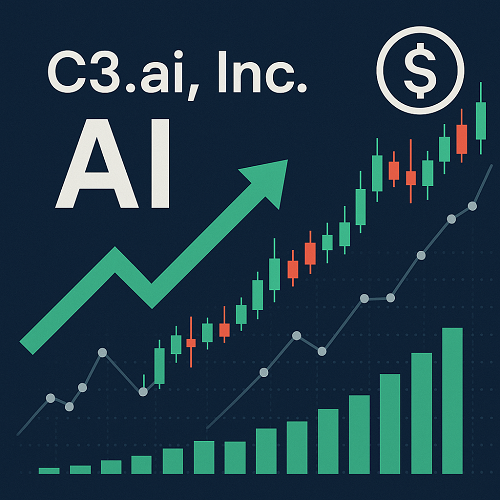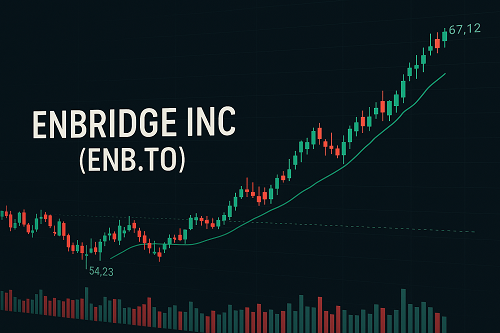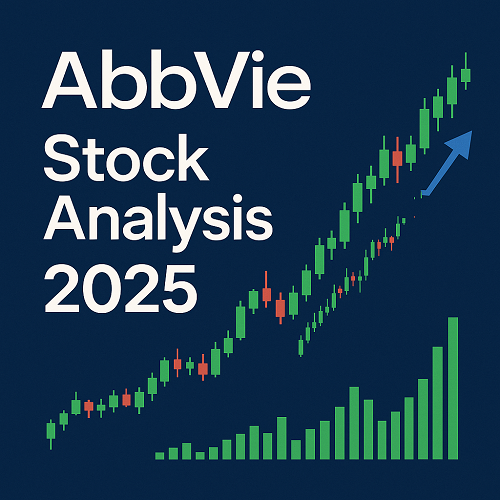Palo Alto Networks (“PANW”) is one of the leading global cybersecurity companies, positioned at the heart of a rapidly growing and mission-critical market. For those tracking stock performance, it is listed under nasdaq as panw. The company has delivered robust revenue growth, strengthened its platform strategy and is making strategic moves (including a large acquisition) to expand its footprint in identity and AI-driven security. At its current valuation the stock appears richly priced, so investors and traders must balance growth potential with valuation risk and execution risk. This article will unpack PANW’s business, financials, growth prospects, valuation, risk factors and a trading/investment roadmap.
Company Overview & Market Position
Company Snapshot
- Founded in 2005, Palo Alto Networks is headquartered in Santa Clara, California.
- It provides a broad suite of cybersecurity products including next-generation firewalls, cloud security (Prisma), endpoint/operations (Cortex) and threat research (Unit 42).
- The company serves tens of thousands of customers globally, including many large enterprise and government clients.
Strategic Positioning
- PANW has shifted from being primarily a firewall appliance company to a full-platform cybersecurity provider (network + cloud + endpoint + identity). This expansion is timely given the rising complexity of cyber threats and the move to hybrid and cloud-native environments.
- It competes with firms in network security, cloud security, identity security, and emerging AI-driven cybersecurity. This gives it a broad addressable market.
- Recent news indicate PANW is benefiting from an “AI-driven upgrade cycle” in enterprise security.
Why It Matters
Cybersecurity is no longer a niche preoccupation. With increased frequency and sophistication of cyber-attacks, enterprises and governments are investing more heavily in integrated security solutions. PANW, by virtue of its platform, is positioned to benefit from this secular tailwind. The company’s ability to cross-sell cloud, endpoint and identity solutions gives it significant leverage.
Financial Performance & Metrics
Recent Results & Guidance
- Q4 Fiscal 2025: Revenue ~ $2.54 billion, up ~16 % year-over-year; adjusted EPS ~$0.95. I
- The company provided outlook for Fiscal 2026: Revenue ~$10.475-10.525 billion, EPS ~$3.75-3.85, beating analyst expectations.
- Earlier: The company raised its full‐year revenue forecast for FY25 to ~$9.14-9.19 billion on strong demand.
Valuation & Key Metrics
- Current P/E ratio: Very high compared to sector average. For example, MarketBeat reports a P/E ~137.25.
- PEG ratio (which adjusts P/E for expected growth): ~5.16, suggesting the market is pricing in a lot of future growth.
- Price‐to-Book ratio: ~18.83, again pointing to a rich valuation.
- Market cap: ~ US$145-150 billion.
Strengths & Financial Health
- Strong growth: Revenue growing mid-teens to high-teens % in recent quarters.
- Global footprint and large enterprise client base give scale and cross-sell potential.
- Solid cash flow generation (free cash flow indications are positive).
Weaknesses & Financial Risks
- The high valuation means most of the good news may already be priced in. Any misstep (e.g., missed guidance, margin compression) could lead to outsized downside.
- Profit margin improvement may face headwinds: higher R&D, competition, product investment.
- Execution risk in transitioning business models (e.g., hardware → cloud subscription) is non-trivial.
Growth Drivers
Secular Tailwinds
- Rising frequency and severity of cyber threats (ransomware, supply-chain attacks, AI-driven threats).
- Shift to cloud, hybrid architectures, remote work: increases demand for integrated cyber-platforms rather than point solutions.
- Identity security and zero-trust frameworks are becoming mainstream. PANW’s move into identity is noteworthy (see acquisition discussion below).
- AI and machine-learning based cyber defence — PANW’s messaging (and acquisition strategy) reflects this.
Strategic Moves
- Acquisition of CyberArk Software Ltd. (identity security) in a cash+stock deal valued at approx US$25 billion.This positions PANW to broaden its platform into identity, a key growing segment.
- Product expansion: introduction of solutions like Prisma (cloud security), Cortex (XDR/endpoint), and moves into AI-application security.
- Cross-selling/up-selling into existing large enterprise installed base, enabling higher ASPs (average selling prices) and recurring revenue shift (subscription models).
Competitive Moat Considerations
- Scale & global reach: PANW already serves large enterprises and governments, making competitive entry harder for smaller players.
- Platform integration: If PANW can deliver network+cloud+identity+endpoint seamlessly, it may hold a sustainability advantage over point players.
- Threat intelligence (Unit 42) and brand reputation: these intangible factors contribute to competitive strength.
Risks & Headwinds
Valuation Risk
Given the elevated valuation, the stock needs continued high growth and margin improvement to justify the price. If growth slows, valuation multiples may contract significantly.
Execution Risk
- Integration of large acquisition (CyberArk) presents execution risk: culture, systems, overlapping portfolios, cost synergies.
- Transition from hardware-centric to subscription/cloud-centric business is non-trivial and may impact margins.
- Competitive pressure: cybersecurity is crowded (e.g., CrowdStrike Holdings, Inc., Fortinet, Inc., Check Point Software Technologies Ltd.) and innovation is fast-moving.
Macro / Market Risks
- If enterprise IT spending weakens (due to economic downturn), cybersecurity spend could be impacted.
- Geopolitical/cyber-attack factors: while potentially positive for demand, also may expose PANW to liabilities/regulatory risk (especially in global operations).
- Currency, inflation, supply-chain issues (even for cloud/hardware providers) could impact costs.
Competitive & Technological Risk
- Emerging threats (e.g., agentic AI attacks) may outpace defence platforms; if PANW fails to keep up it risks obsolescence.
- Open-source/free alternatives or new entrants could erode margins.
Valuation & Investment Case
Current Valuation Perspective
At ~US$217/share (recent trading) the market cap is around US$145-150 billion. The implied forward P/E and PEG indicate high expectations built in.
Analyst consensus price‐targets vary widely; Markets Insider notes a median of ~US$283.62 (with range up to US$450).
If PANW can deliver ~15-20%+ growth in revenue and EPS and execute its identity/AI strategy, there is upside — but the margin for error is limited.
Investment Thesis
Bull Case:
- Executing on identity + cloud + AI expansion unlocks large incremental revenue.
- Margin expansion and subscription shift increase recurring revenue and visibility.
- Leadership in cybersecurity gives durable tailwinds as cyber-risk continues to escalate.
Base Case:
- Continue mid-teens % revenue growth, modest margin improvement — stock delivers moderate gains but remains volatile due to high valuation.
Bear Case:
- Growth slows/competition eats in, margin pressure builds. Valuation contracts and downside risk increases.
Trading / Investor Roadmap
- Investors looking for long-term exposure: PANW is a credible growth-oriented holding in cybersecurity, but allocate accordingly given valuation.
- Traders looking for short‐term opportunities: Monitor earnings releases, acquisition news (CyberArk integration), cybersecurity market catalysts (e.g., major breach, regulation changes).
- Key levels & triggers: Watch for guidance, margin commentary, subscription vs hardware mix shifts. On the chart side, if valuation multiples compress, the stock may fall even with decent growth.
Technical & Market Sentiment Indicators
- Analyst sentiment: MarketBeat rating is “Moderate Buy” based on mix of buy/hold/sell ratings.
- Insider/Institutional: High institutional ownership (~80% of shares) suggests strong market trust but also limited retail upside.
- Recent catalysts: Analyst price target upward revisions (e.g., Bank of America raised its PT from $215 to $240) following positive outlook.
- Technical range: 52-week trading range ~$144 to ~$221. The current price is near the upper end, reducing margin of safety.
Macro & Industry Context
- Cybersecurity spending globally is projected to grow as threats evolve and enterprise architectures shift to cloud/hybrid/AI. PANW is well-positioned for this broad secular trend.
- The industry is experiencing consolidation (e.g., large acquisitions) which can create scale advantages but also integration risk. PANW’s acquisition of CyberArk is part of this consolidation wave.
- Regulatory risk (data privacy, national critical infrastructure) is higher; cybersecurity vendors like PANW stand to benefit but also carry exposure to regulatory shifts and reputational risk.
SWOT Summary
Strengths: Leading platform, large enterprise customer base, strong growth profile.
Weaknesses: High valuation, dependent on execution, margin pressure risk.
Opportunities: Identity security (via CyberArk), AI/ML driven cyber defence, cloud security growth.
Threats: Slowing enterprise spend, execution/integration failure, increased competition, valuation contraction.
Conclusion & Action Points
In summary, Palo Alto Networks (PANW) is a high-quality company operating in a space with strong tailwinds. However, the stock’s premium valuation means that while reward potential is meaningful, risk is elevated if growth or execution falters.
If I were taking a position (hypothetically):
- Ensure entry point is favorable (e.g., after a pullback or on a strong earnings beat).
- Maintain disciplined risk management: set stop-loss / sizing given the valuation risk.
- Monitor key upcoming events: Q1/2026 earnings, CyberArk integration progress, margin guidance, subscription/hardware mix.
- For longer-term investors: consider PANW as a core growth holding but diversify to mitigate idiosyncratic risk.
- For traders: watch for breakout or reversal signals tied to catalyst events.





 XAUT-USD
XAUT-USD  AMD
AMD  MARA
MARA  SHOP
SHOP  BULL
BULL  CL=F
CL=F